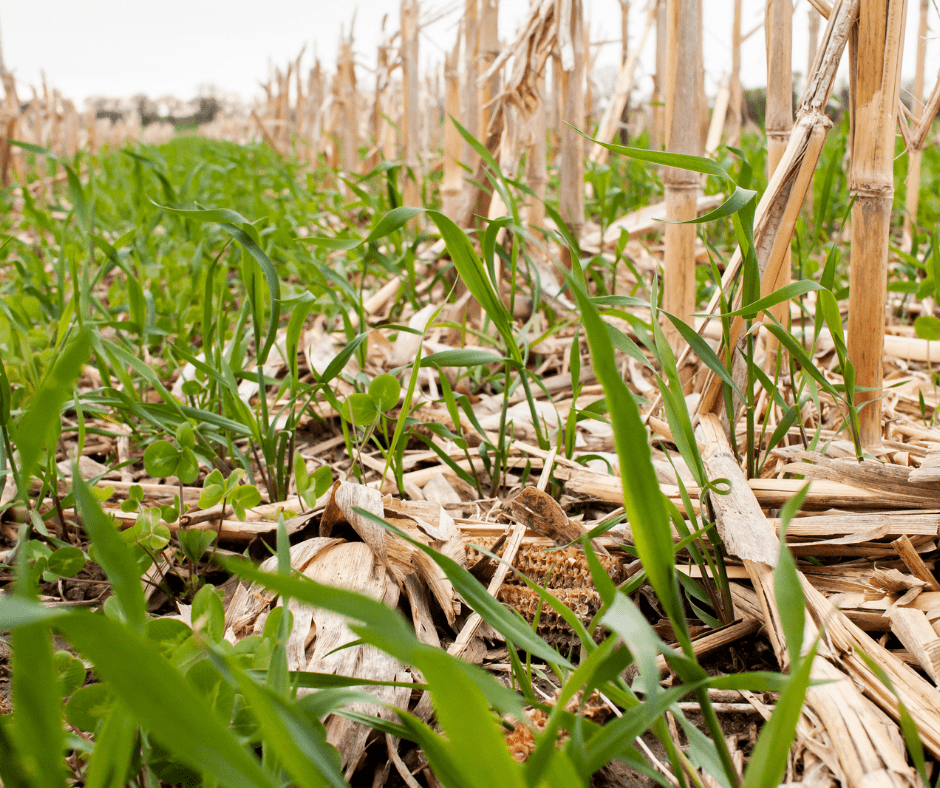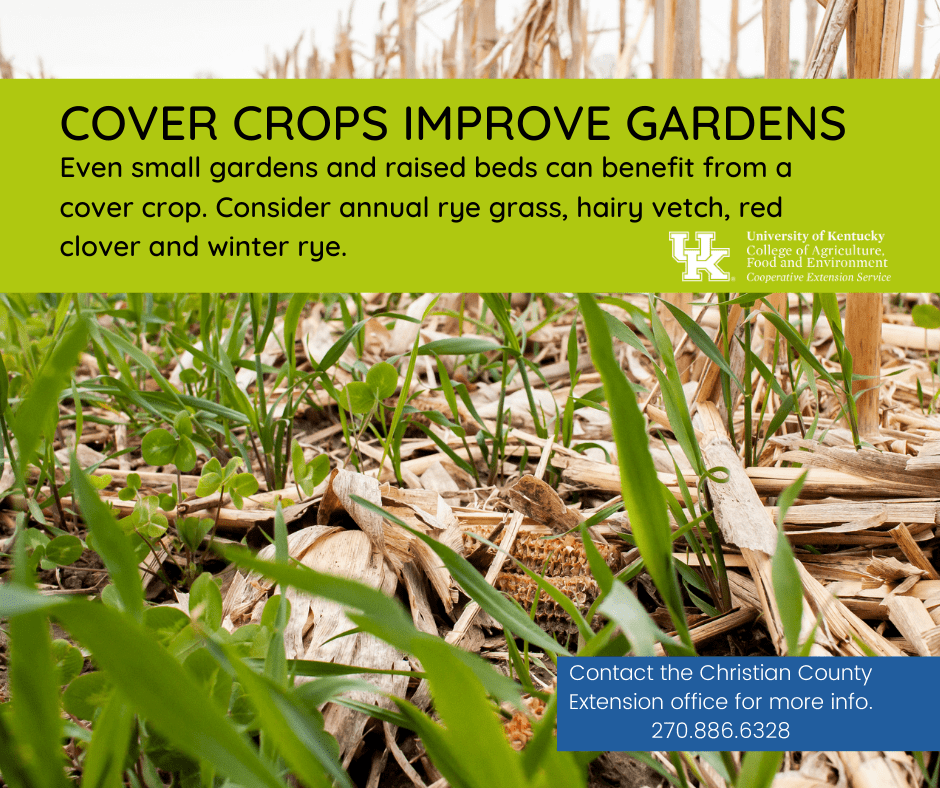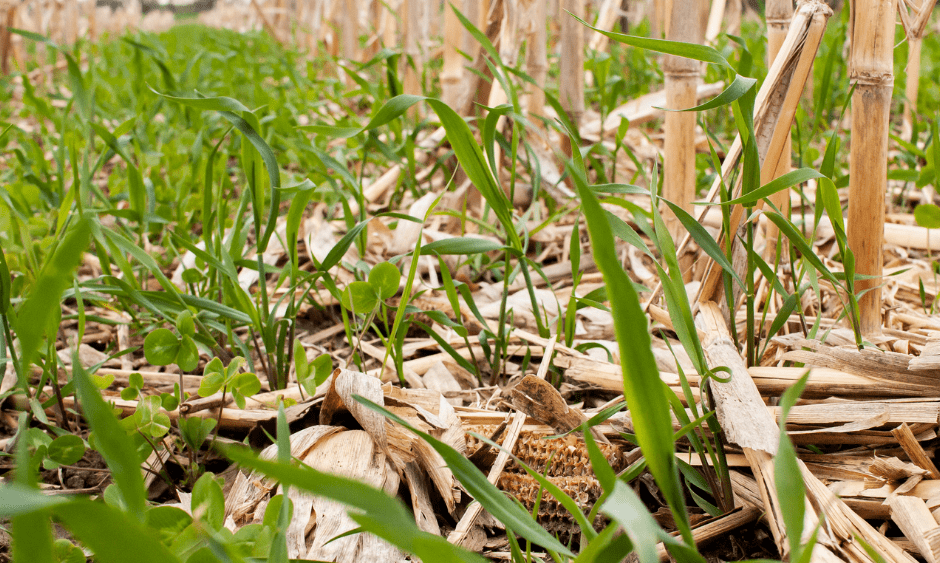No matter how small your garden is, it can play an important role in absorbing carbon dioxide from the atmosphere and temporarily locking it in the soil. There are a number of ways you can improve on this natural cycle, but at this time of year, the best way is through a cover crop.
Soil left bare over the winter months is susceptible to weed growth, erosion that can wash away valuable nutrients and a loss of carbon into the atmosphere. Soil nitrogen left over from this year’s crop is subject to leaching due to fall and winter precipitation. Planting a fast-growing cover crop can help prevent these problems. The term “crop” in this context may be misleading. These plants are not meant to be harvested. Instead, they add important nutrients, promote beneficial bacterial growth and stabilize the soil.

Easy and effective cover crops that can be planted at this time of year include annual rye grass, hairy vetch, red clover and winter rye.
Annual rye and winter rye are particularly effective as late-season cover crops. They germinate quickly and are an effective barrier against weeds. Grasses, however, do not capture nitrogen in their root system, so consider pairing rye with a legume, such as red clover or hairy vetch.
Hairy vetch and red clover work well as a cover plant, whether paired with rye or by themselves. Being legumes, they are excellent at fixing nitrogen in the soil. They are also prolific enough to reduce weeds and prevent erosion.
In the spring, their blossoms will attract bees to your garden. If you worry about hairy vetch or clover reseeding in your lawn – though they’re pretty plants and would add biodiversity and important nutrients – just cut them back before they bloom.

Come spring, you have two options. You can turn over your cover crop into the soil, allowing your vegetables or flowers to benefit from the nutrients it will slowly release. Or you can cut it back and let it die naturally, planting directly into the crop and using it as a mulch to continue to suppress weed growth and supply nutrients to your garden. Depending on which cover you plant, this may be easier said than done, because some, particularly grasses, are difficult to directly sow or plant into.
Grasses have a densely packed root system, which make them difficult to till or turn over. If your garden is particularly small or you’re gardening in raised beds, rye might not be your best option. However, vetch and clover both have root clumps which are easily dug up and turned over or planted between. Be sure to terminate the cover crop before allowing the plants to go to seed.
— Kelly Jackson, Christian County Extension Agent






